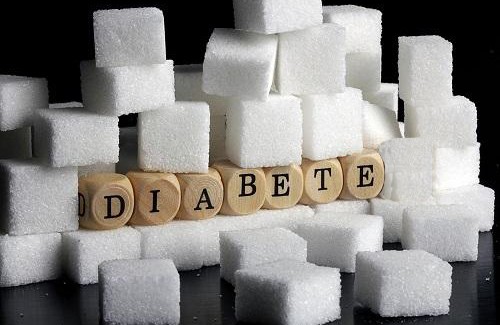Highlights
- •Two novel derivatives of protamine were synthesized to facilitate sublingual delivery of proteins.
- •These protamine derivatives enable delivery of proteins up to 150 KDa by simple mixing.
- •The protamine derivatives promoted transcellular delivery by forming nanopores on cell surface.
- •These protamine derivatives were safe in mice.
Abstract
Therapeutic proteins often require needle-based injections, which compromise medication adherence especially for those with chronic diseases. Sublingual administration provides a simple and non-invasive alternative. Herein, two novel peptides (lipid-conjugated protamine and a protamine dimer) were synthesized to enable sublingual delivery of proteins through simple physical mixing with the payloads. It was found that the novel peptides promoted intracellular delivery of proteins via increased pore formation on the cell surface. Results from in vitro models of cell spheroids and human sublingual tissue substitute indicated that the novel peptides enhanced protein penetration through multiple cell layers compared to protamine. The novel peptides were mixed with insulin or semaglutide and sublingually delivered to mice for blood glucose (BG) control. The effects of these sublingual formulations were comparable to the subcutaneous preparations and superior to protamine. In addition to peptide drugs, the novel peptides were shown to enable sublingual absorption of larger proteins with molecular weights from 22 to 150 kDa in mice, including human recombinant growth hormone (rhGH), bovine serum albumin (BSA) and Immunoglobulin G (IgG). The novel peptides given sublingually did not induce any measurable toxicities in mice.
Introduction
Protein drugs have gained substantial traction in the global pharmaceutical market, capturing a 20% share due to their increased selectivity and prolonged half-life compared to small molecule drugs [1]. However, limited by their inherently poor membrane permeability and stability in the gastrointestinal tract, most protein drugs require needle-based delivery, a method associated with discomfort and injection site reactions [2]. This poses challenges to patient compliance, particularly in chronic conditions requiring long-term medications [3]. Although oral administration is most desirable, the harsh gastrointestinal environment exhibits formidable biological barriers, including extreme acidity (pH 1.0–2.0) and active digestive enzymes, which minimizes oral absorption of protein drugs [4].
Transmucosal routes, such as intranasal, sublingual and intravaginal delivery, provide attractive alternatives due to their high accessibility and permeability. In addition to reduced concentrations of digestive enzymes, these alternative routes also allow bypassing of first-pass metabolism. All of the above contribute to increased absorption of biological drugs from the mucosal routes. Among these, sublingual administration has emerged as a promising option, characterized by increased patient preference [5] and reduced formulation requirements, such as pH and osmolarity [6]. Sublingual delivery also boasts convenience and rapid absorption, which is particularly beneficial for emergent conditions [6]. However, thick, mucinous fluid secreted by sublingual glands and the tight epithelial layer under the mucus minimize drug absorption, especially for large molecules [7].
Diverse technologies have been harnessed for sublingual delivery, primarily categorized as absorption enhancers and mucoadhesive materials. However, absorption enhancers may risk irreversible junctional damage in the epithelial layer [8], and mucoadhesive materials exhibit limited epithelial penetration [9]. Guanidinium-rich materials have been shown to promote trans-cellular delivery of proteins through strong interactions with the cell membrane [[10], [11], [12]]. In particular, cell-penetrating peptides (CPPs) rich in arginine (containing a guanidinium side chain) show promise for facilitating transmucosal delivery of macromolecules in vivo beyond just the cellular level [13]. However, CPP-mediated protein delivery is typically constrained by the payload size and susceptible to endosomal entrapment [14]. Fusing a protein payload with a CPP increases mucoadhesion and enhances endosomal escape [15,16]; however, this method requires delicate chemistry or protein engineering to ensure consistent fabrication of the conjugate and release of the active drug [[17], [18], [19]].
Protamine, a clinically used peptide rich in arginine, has been shown to facilitate intracellular delivery of proteins up to 150 kDa with low lysosomal accumulation through simple physical mixing with the payload [20]. Our previous study revealed that the vast majority of fluorescence of Alexa647-labeled protamine was found at the cell membrane in a punctate manner during the treatment, suggesting that multiple protamine molecules aggregate at the cell membrane to permeate the cell and promote cytosolic delivery (suppl Fig. 1). Therefore, we hypothesized that the activity of protamine in promoting protein delivery could be enhanced by conjugating a lipid to protamine to increase its affinity for the cell membrane or by crosslinking protamine molecules to mimic its aggregation, making it ready to permeate the membrane upon administration.
We synthesized two novel peptides: stearic acid conjugated protamine (C18-P) and a protamine dimer (P2), which were characterized by nuclear magnetic resonance (NMR), Fourier transform infrared spectroscopy (FTIR), circular dichroism (CD), transmission electron microscopy (TEM), atomic force microscopy (AFM), mass spectrometry (MS) and dynamic light scattering (DLS). The protein delivery efficiency and delivery mechanisms of protamine, C18-P and P2 were compared using in vitro models of human primary gingival keratinocytes. Their in vivo performance in mice was assessed through comparison of their sublingual delivery efficiency for insulin, semaglutide, growth hormone, bovine serum albumin, and immunoglobulin G (IgG). Finally, safety of the novel peptides delivered sublingually in mice was monitored by animal body weight, general health, hematology, blood chemistry, serology, and tissue histology.







